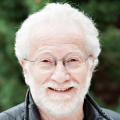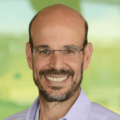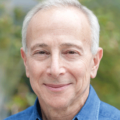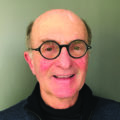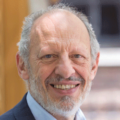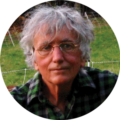2019
Causal Inferences: Facilitating Health Decisions in the Face of Uncertainty
-
I. Early Disease Detection and Treatment
-
Welcoming Remarks
Dr. Larry Gold is the Founder and Chairman Emeritus of the Board, and former CEO of SomaLogic. Prior to SomaLogic, he also founded and was the Chairman of NeXagen, Inc., which later became NeXstar Pharmaceuticals, Inc. In 1999, NeXstar merged with Gilead Sciences, Inc. to form a global organization committed to the discovery, development and commercialization of novel products that treat infectious diseases.
-
Learning from the Best Doctor in the World: Our Immune System
The process of developing a diagnostic is slow and expensive because identifying disease signal requires knowledge, and detecting the signal relies on technologies. A shortcut to this classical approach is to learn from the best doctor in the world, i.e., our immune system. In nature, our immune system has already acquired the skills to diagnose and treat diseases. Each of...
-
Teaching Plato in Prison
In Plato’s Allegory of the Cave, human beings live all their lives in an underground cave with their legs and necks chained so that they cannot move or turn their heads. They can only see their own shadows, or the shadows of one another, which a fire, blazing behind them, scatters across the cave wall.
Jean teaches the...
-
Gene-Modified T Cell Therapy for Pediatric Cancers: Where Do We Go From Here?
T cells genetically modified to express chimeric antigen receptors are highly effective at eradicating malignant B cells resulting in recent approval for the treatment of refractory B cell acute lymphoblastic leukemia in children and B cell lymphoma in adults. However, a substantial number of patients will relapse or not respond and extension of CAR T cell therapy to other forms...
-
Extreme Clinical Phenotypes in Drug Discovery and Medical Education
Discovery of impactful new medicines rests upon a base of strong fundamental science. Translation from discovery to therapeutic takes decades, not so much because drug discovery per se is hard (which it is) but because the relevance to disease is obscure. The clearest translational path, we have found, often is via a rare disease, where patients have a strong phenotype...
-
Cry Havoc
Cry Havoc is an award-winning, critically acclaimed one-person play by military veteran, Stephan Wolfert. Wolfert seamlessly interweaves Shakespeare’s most famous speeches with personal experience to help us understand the national crises we face when we “wire for war but never un-wire from war”.
“It chews you up and spits you out, as it were. It gives you chills while...
-
-
II. Immunology and Inflammation
-
The Oxygen Paradox—A New Approach to Treat Neurodegenerative Diseases
Humans can only survive a few minutes without breathing oxygen. Oxygen is converted in the mitochondrial membrane to water and the energy liberated by this process helps power most bodily functions. Unfortunately, the conversion process occurs in several discrete steps and the intermediates in these steps are extremely toxic and damage (oxidize) the polyunsaturated fatty acids (PUFAs) required in mitochondrial...
-
The Nutrition and Cancer Research Journey: From Chemical-Physical Carcinogenesis to Metabolic Carcinogenesis
A growing body of scientific evidence has accumulated supporting the role in cancer aetiology of factors often labelled as “metabolic” that include diet, anthropometric characteristics, physical activity, metabolic syndrome components, and some aspects of sexual maturation and reproductive life. The need to investigate these complex lifestyle and metabolic factors justified the development of large prospective cohort studies. The European Prospective...
-
Mice and Mothers: Understanding Pregnancy Complications in Patients with Autoimmunity
Systemic lupus erythematosus (SLE) is an autoimmune disease that predominantly affects women and presents during their childbearing years. Pregnancy in these women is dangerous both for mother and offspring, and, in the past, patients were advised not to have children. Among complications frequently seen in women with lupus is preeclampsia (also known as toxemia of pregnancy), preterm birth, markedly underweight...
-
Too Much of a Good Thing? Considering Gene-Environment Interactions in Health and Disease
Neural tube defects (NTDs), like spina bifida, are a devastating and common birth defect, with current rates ranging from less than 1 to 10 per 1,000 births worldwide. Environmental factors influence the risk for NTDs. Certain medications, diabetes, obesity, and nutrient deficiencies are associated with a greater risk for NTDs. A key public health breakthrough was the recognition that low...
-
-
III. Cancer, Early Tumor Diagnosis and Tumor DNA
-
Blood-Based Screening to Combat the Rise of Colorectal Cancer in China?
Colorectal cancer (CRC) is a major cause of morbidity and mortality throughout the world, accounting for over 9% of all cancer incidence. In developed countries, the incidence and mortality rates of CRC have dropped significantly in the last twenty years, while these rates in developing countries (such as China) have increased significantly. While lifestyle and dietary changes in developing countries...
-
Pushing Forward the Biological Understanding and Diagnostic Applications of Circulating DNA
Dr. Dennis Lo's group reported the presence of cell-free fetal DNA in maternal plasma in 1997. Since then, this technology has been developed into a platform for noninvasive prenatal testing (NIPT) that can be used for the screening of multiple types of fetal chromosomal aneuploidies, various types of single-gene disorders and even for fetal whole genome sequencing. Apart from circulating...
-
My Life Over and Under the Microscope as a Cancer Scientist and Patient
Cancer is a genetic disease—that is, it is caused by alterations (mutations) in the genetic information encoded in genes that determine the structure and function of proteins and other macromolecules. In cancer cells, these alterations lead to uncontrolled cell division that results in the formation of solid tumors or in excessively high levels of certain types of blood cells....
-
The Host Cancer Interface: Obesity and Diabetes Promote Cancer Development and May Reduce Treatment Efficacy
Obesity and type 2 diabetes (T2D) are common and comorbid diseases, reflecting significant dysregulation of human carbohydrate and lipid metabolism. These are well known risk factors for cardiovascular disease, whereas their association with cancer risk and poor cancer outcomes are less well known. The process of cancer development is complex, influenced by many factors, and typically takes years to occur....
-
-
IV. Personalized Medicine is Personal
-
A Journey into the Science of Mind Over Body
Can the mind heal us? Thoughts clearly influence physiology, from fear to sexual arousal, but there is much skepticism about the idea of “healing” thoughts and beliefs. Recently, however, scientists from a range of fields have been uncovering evidence that our mental state can play a crucial role in determining both symptoms we experience and underlying processes of disease. Placebos...
-
Why Would Anyone Study Rare Diseases?
Rare disease is defined as a disorder impacting fewer than 200,000 people. There approximately 7,000 rare diseases that impact 25-30 million Americans. Rare diseases can have a known or unknown genetic basis or occur spontaneously and are identified across the lifespan. New rare disorders continue to be identified. The majority of rare diseases are not formally tracked in any way...
-
Truly Personalized Medicines for Ultra-Rare Diseases: New Opportunities in Genomic Medicine
Over 30 million patients in the United States live with a rare disease. Genome sequencing is revolutionizing their diagnosis, but 95% still lack effective therapy. With over 7,000 conditions to tackle, new and creative frameworks will be necessary to address this gap. Julia and Tim will present the recent case of a six year old girl who suffered the sudden...
Presented By:
-
Truly Personalized Medicines for Ultra-Rare Diseases: New Opportunities in Genomic Medicine
Over 30 million patients in the United States live with a rare disease. Genome sequencing is revolutionizing their diagnosis, but 95% still lack effective therapy. With over 7,000 conditions to tackle, new and creative frameworks will be necessary to address this gap. Julia and Tim will present the recent case of a six year old girl who suffered the sudden...
Presented By:
-
-
Closing Remarks
-
2019 GoldLab Symposium Closing Remarks
Dr. Larry Gold is the Founder and Chairman Emeritus of the Board, and former CEO of SomaLogic. Prior to SomaLogic, he also founded and was the Chairman of NeXagen, Inc., which later became NeXstar Pharmaceuticals, Inc. In 1999, NeXstar merged with Gilead Sciences, Inc. to form a global organization committed to the discovery, development and commercialization of novel products that treat infectious diseases.
-





